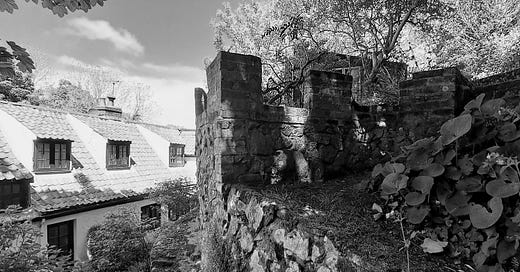What we have learned to do efficiently is to split the tongue beneath the tower. An axe-head dislocated from a grotto on the eastern coast has kissed the forehead of our tongue and splayed it open like a tulip, blooming from its bulb to melt—(eventually)... The eye has moved from flesh to glass and images have moved with us from stone, back into light; the way a violet's grandmother will simmer on the skin of progeny, a rarified beauty of the sun, that feeds them and will see them slowly drowned in love. The insight that has shown the laureled prophets iron’s climb from boiling subterrains to jet on jagged angles through the air, then harden where our tongues no longer taste the sour pit of elder fruits—this insight only leads us to the tower's rooted foot more quickly than it took our ancestors to find it. The world is a bouquet held out to nothing, for the sake of its wayfinding back into a hand that might express, in feeble grasping for the petals, grace; (...we too have stumbled, languageless to stop beneath clay edifices, rounded under time, on the way back into vastness, gasping out decreasing stores of breath toward senescence). The Ipomoea alba opens in the the chain of light translated by the moon into the lake of lilac-white that pools to round the harshness of the continents— by its murmured memory we know the spill of seeded, silken largesse from the central turning hand that crenellates the hills, that buttresses the roads that wind around and through the tower gardens...
Discussion about this post
No posts





There's something pleasing about the three "that" phrases that end the poem:
"the central turning hand
that crenellates the hills, that buttresses the roads
that wind around and through the tower gardens..."
I can't quite articulate why, but it is very nice.
I have no idea what it means, but I really, really enjoyed the language in the first two stanzas: sinewy